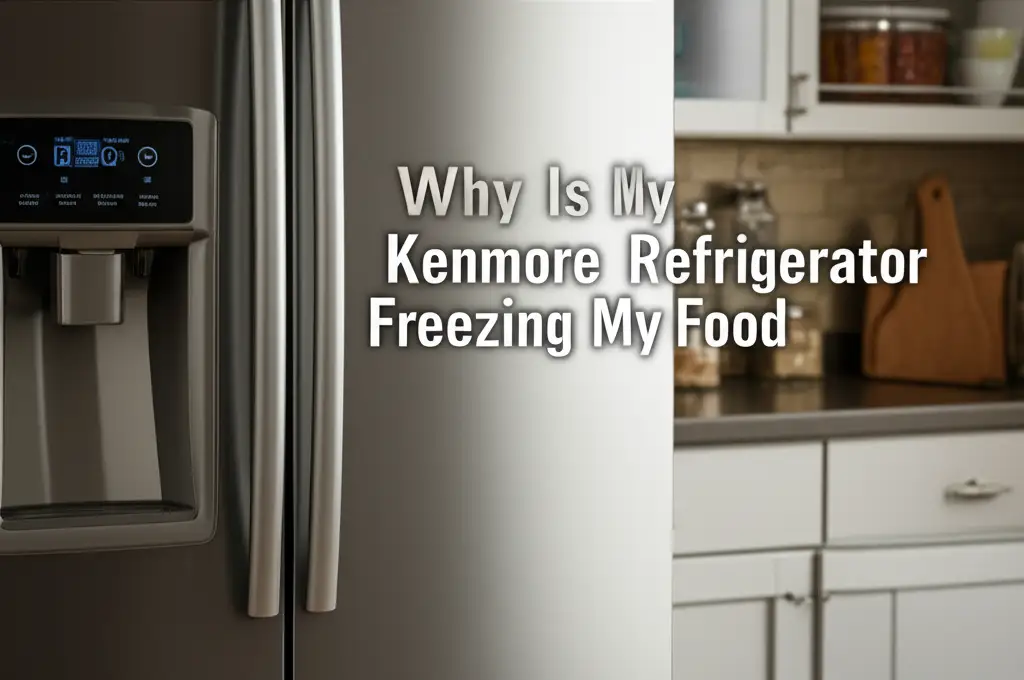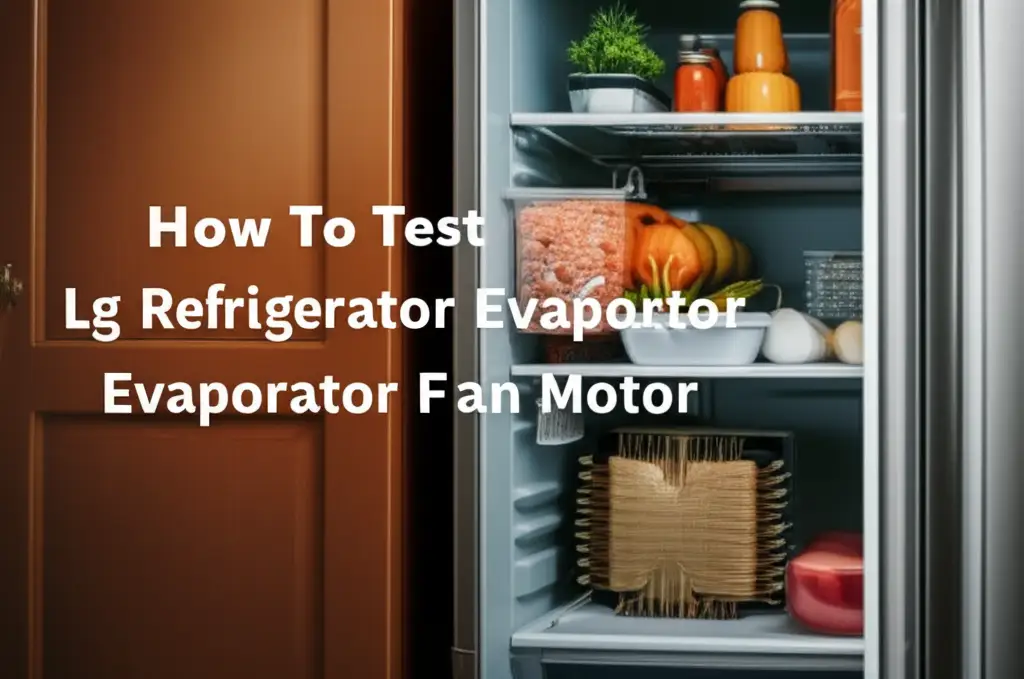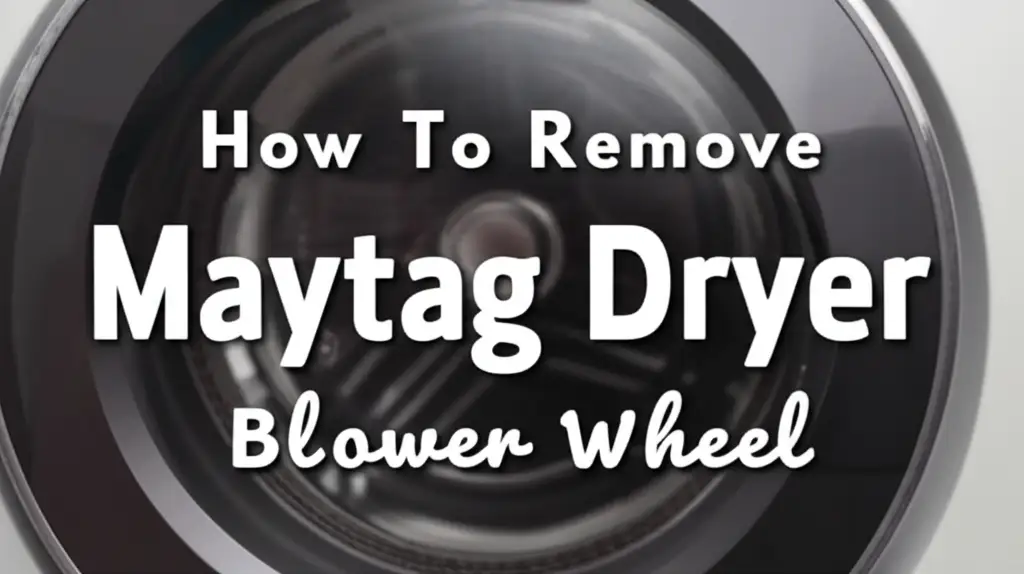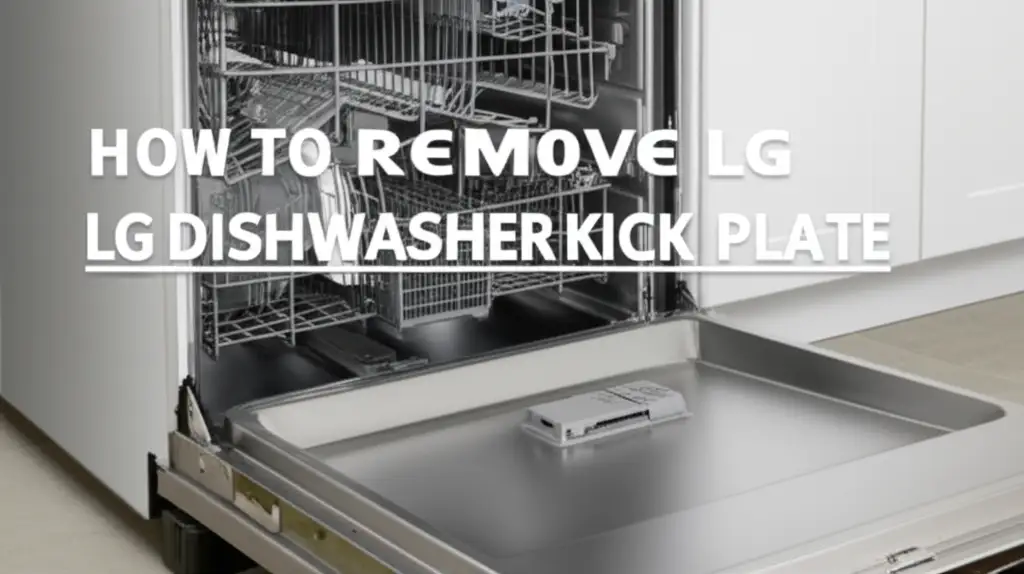· Davia Murnell · Appliance Repair · 22 min read
How To Change Kenmore Refrigerator Led Light Bulb
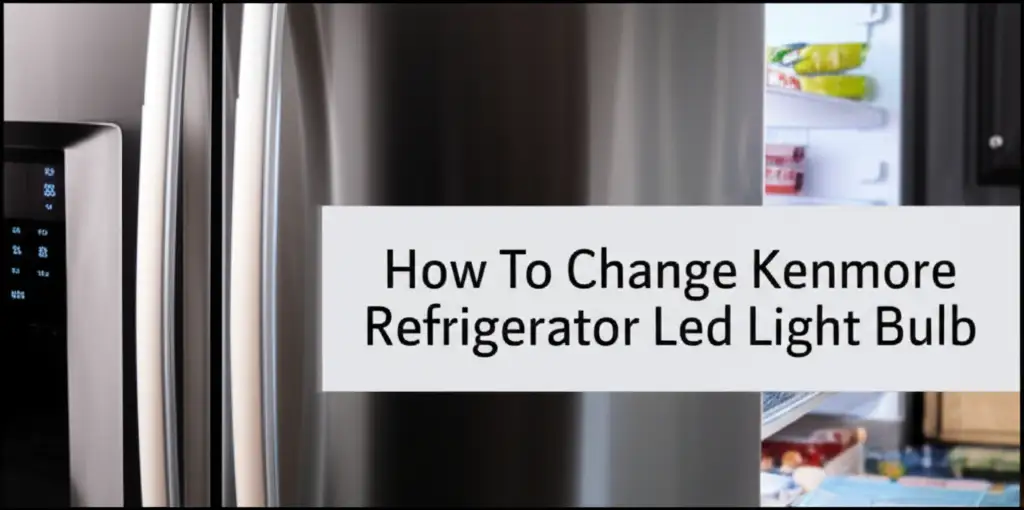
Your refrigerator light suddenly went out. That common experience leaves your food hidden in the dark. It is a frustrating moment for anyone needing a quick snack or a dinner ingredient. Replacing an LED light bulb in your Kenmore refrigerator might seem complex. However, it is a straightforward task.
This guide will walk you through each step. You will learn how to change Kenmore refrigerator LED light bulb safely and efficiently. We will cover everything from safety precautions to selecting the correct bulb. You will also find useful troubleshooting tips. By the end, your Kenmore refrigerator will shine bright again.
Takeaway
- Always unplug the refrigerator before starting any work. This ensures your safety.
- Identify your Kenmore model and the specific light cover type. Different models have different methods.
- Gently remove the light cover and the old LED bulb. Avoid forcing parts.
- Install the new LED bulb by carefully inserting it. Ensure it fits correctly.
- Test the light before fully closing the refrigerator.
To change a Kenmore refrigerator LED light bulb, first unplug the appliance for safety. Next, locate the light cover, which may snap off or use screws. Gently remove the cover, then twist or unclip the old LED bulb. Insert the new compatible LED bulb firmly, replace the cover, and plug the refrigerator back in to test the light.
Brighten Your Kenmore: Changing Your LED Refrigerator Bulb
A dark refrigerator is more than an annoyance; it is a real hindrance. Finding ingredients becomes a chore, and forgotten items can spoil. The good news is that replacing your Kenmore refrigerator’s LED light bulb is a task most homeowners can manage. You do not need a technician for this simple repair. This section starts your journey to a well-lit fridge.
First, identify the exact model of your Kenmore refrigerator. This step is important for knowing the correct bulb type and cover removal method. You can usually find the model number inside the fresh food compartment. It might be on a sticker near the top or bottom. Knowing your model helps you prepare correctly.
Next, gather the necessary tools. You will typically need a flathead screwdriver, a Phillips head screwdriver, and potentially a trim removal tool. Sometimes, only your hands are enough for the task. Having the right tools saves time and prevents damage. Prepare your workspace before you begin.
Finally, confirm you have the correct replacement LED bulb. Kenmore refrigerators use specific LED modules or traditional screw-in LED bulbs. Using the wrong bulb can cause electrical issues or poor illumination. Always refer to your owner’s manual for the exact bulb specifications. This initial preparation makes the replacement process smooth.
Safety First: Essential Preparations Before You Begin
Safety is the most important step before you start any repair on an appliance. Working with electricity carries risks. Ignoring safety precautions can lead to electric shock or damage to your refrigerator. Your personal well-being always comes first.
The primary safety measure is to disconnect power to the refrigerator. Locate the power cord and unplug it from the wall outlet. If the cord is not easily accessible, turn off the circuit breaker that supplies power to the kitchen or utility area. Verify the power is off by attempting to open the refrigerator door and check for light. This simple action removes the electrical hazard.
Next, clear the area around the refrigerator. You need enough space to work comfortably and safely. Remove any food items or shelves that obstruct access to the light bulb. This ensures you have a clear line of sight and room for your hands and tools. A tidy workspace prevents accidental spills or trips.
You should also wear appropriate personal protective equipment. This might include work gloves to protect your hands from sharp edges or small cuts. Safety glasses can guard your eyes from debris or if a tool slips. These items add an extra layer of protection during the repair. Being prepared ensures a safe environment.
Gathering Your Tools and Supplies
Having the right tools makes the job easier and prevents damage. You do not need a huge toolbox for this repair. However, specific tools are essential for different Kenmore models. Take a moment to collect everything you might need before starting.
You will likely need a flathead screwdriver. This tool helps gently pry open light covers or remove screws. A Phillips head screwdriver is also common. Many light covers or housing units use Phillips head screws. Always use the correct size to avoid stripping the screw heads.
Sometimes, a plastic trim removal tool is beneficial. These tools are designed to pry plastic parts without scratching or damaging them. If your light cover is a snap-on type, a plastic tool reduces the risk of breaking tabs. You can find these at most hardware stores. They are much safer for plastic than metal screwdrivers.
Most importantly, have your new Kenmore replacement LED bulb ready. Ensure it is the correct type and wattage for your specific model. Refer to your refrigerator’s manual or the old bulb itself for specifications. Having the right bulb from the start prevents extra trips to the store.
Understanding Your Kenmore Model
Kenmore refrigerators come in many different models and designs. Each model might have a slightly different method for accessing and changing the LED light bulb. Understanding your specific model is key to a smooth repair process. This knowledge helps you avoid frustration and potential damage. If you are unsure which Kenmore refrigerator you have, you can find helpful guidance on identifying your specific model. Learn more here: how to tell which kenmore refrigerator i have.
Start by locating your refrigerator’s model number. This number is usually on a sticker or plate inside the fresh food compartment. It might be on the side wall, near the top, or at the bottom. Sometimes, it is on the back of the unit. Write down this number for reference.
Once you have the model number, consult your owner’s manual. The manual contains diagrams and instructions specific to your refrigerator. It will show you exactly where the light bulb is located and how to access its cover. If you do not have the physical manual, you can often find it online. Kenmore provides manuals on its website.
Pay close attention to the light cover design in your manual. Some covers snap into place. Others are held by screws or clips. Knowing this beforehand prepares you for the removal method. This understanding prevents you from forcing a part that is meant to be unscrewed.
Locating and Accessing the LED Light Bulb
Once your Kenmore refrigerator is unplugged and you have your tools ready, it is time to find the light bulb. LED lights in Kenmore refrigerators are typically located in the fresh food compartment. They provide clear illumination for your groceries. Sometimes, a separate LED light might be in the freezer section as well.
The exact position varies by model. Older Kenmore models might have a single bulb at the top or side. Newer models often feature multiple LED panels or strips. These can be on the ceiling, along the back wall, or even integrated into the side panels. Open your refrigerator door wide to get a good view.
Look for a plastic cover or housing that conceals the light. This cover protects the bulb from moisture and physical damage. It also helps diffuse the light evenly. The cover might be clear or opaque. Its design indicates how you will remove it.
Carefully examine the edges of the light cover. You will see tabs, screws, or clips holding it in place. Do not attempt to force the cover off without understanding its attachment points. Forcing it can break the plastic, leading to further repair needs. Understanding these attachment points is critical for a smooth removal process.
Identifying the Light Cover Type
Kenmore refrigerators use various types of light covers. Knowing which type you have simplifies the removal process. Incorrect removal attempts can break the cover or damage the housing. Take a moment to observe how your light cover is secured.
Some light covers snap into place. These often have small plastic tabs or clips around their edges. You typically need to gently pry them open. A flathead screwdriver or a plastic trim removal tool works best for this. Insert the tool into a seam and carefully lever the cover away from the housing. Apply even pressure to avoid cracking the plastic.
Other covers are held in place by screws. These screws might be visible on the surface of the cover or hidden underneath small caps. You will need a Phillips head or flathead screwdriver to remove these. Keep the screws in a safe place so they do not get lost. Losing screws can make reassembly difficult.
A third type of cover might slide into grooves. These often require you to push the cover in one direction, then pull it down or out. This method is common in some side-by-side or bottom-freezer models. Referencing your Kenmore manual is extremely helpful for these specific designs. It will illustrate the correct sliding direction.
Removing the Light Cover Safely
Removing the light cover without causing damage is a crucial step. This part often feels delicate, as you do not want to break the plastic tabs or housing. Patience and the right technique prevent costly mistakes. If you want more detailed instructions on removing the light bulb cover, this article provides comprehensive steps: how to remove kenmore refrigerator light bulb cover.
For snap-on covers, start by identifying the release points. These are usually small notches or seams where a tool can be inserted. Gently insert your flathead screwdriver or plastic pry tool into one of these notches. Apply slight pressure and twist or pry a small amount. You should feel the tab release.
Work your way around the edges, releasing each tab one by one. Avoid using excessive force. If a tab feels stuck, try prying from a different angle or section. Some covers might have a hinge on one side. In this case, release the tabs on the opposite side first, then swing the cover open.
If your cover uses screws, simply unscrew them carefully. Hold the cover as you remove the last screw to prevent it from falling. Place the screws in a small container so they are not misplaced. Once all screws are out, the cover should come off easily. Always remember to be gentle with plastic parts.
The Process of Removing the Old LED Bulb
Once the light cover is off, you can access the old LED light bulb or module. The removal process depends on whether your Kenmore refrigerator uses a traditional screw-in LED bulb or an integrated LED module. Both types require careful handling to avoid damage. Do not rush this step.
For traditional screw-in LED bulbs, it is very similar to changing a regular light bulb. Simply twist the bulb counter-clockwise to unscrew it from its socket. The bulb should come out easily after a few turns. If it feels tight, apply gentle, steady pressure. Avoid twisting too hard, as this can damage the socket.
Integrated LED modules are different. These are often small circuit boards with multiple LED chips. They are typically held in place by clips, small screws, or a simple connector. You might need to unclip them, unscrew them, or disconnect a wiring harness. Observe how the module is seated.
Always handle the bulb or module by its base or housing, not the glass or LED array itself. Oils from your skin can reduce the lifespan of some bulbs. Discard the old bulb or module properly. Some electronic components require special disposal.
Handling Integrated LED Modules
Many modern Kenmore refrigerators use integrated LED modules instead of standard bulbs. These modules are more efficient and last longer. However, replacing them is slightly different from unscrewing a bulb. Do not assume they twist out like traditional lights.
Integrated LED modules often have a wiring harness connected to them. Before attempting to remove the module, locate this connector. It usually has a small tab or lever that you press to release it. Gently pull the connector apart. Avoid tugging on the wires themselves.
The module itself might be held by small plastic clips or tiny screws. If there are screws, use the appropriate screwdriver to remove them. Keep these screws in a safe place. If it uses clips, you might need to gently pry them open or push them in to release the module. Look for arrows or indicators showing the release direction.
Carefully slide or lift the module out of its housing. It is a circuit board, so avoid bending it or touching the sensitive components. Integrated modules are designed to be replaced as a single unit. This design ensures proper light distribution and electrical connection.
Dealing with Traditional Screw-in Bulbs
While many new Kenmore refrigerators feature integrated LEDs, some models still use traditional screw-in LED bulbs. These are easier to replace for most people. The process is very similar to changing a light bulb in a lamp. You just need to ensure it is the right kind of LED bulb.
Once the light cover is removed, you will see the visible screw-in LED bulb. Grip the bulb firmly but gently. Turn it counter-clockwise. It should unscrew from the socket. Continue turning until the bulb is completely free from its base.
If the bulb is difficult to turn, do not force it. Sometimes, old bulbs can be stuck due to heat or debris. You can try a small amount of lubricant on the base (avoiding the glass), but be cautious not to get it on the electrical contacts. Alternatively, try wrapping a cloth around the bulb for a better grip.
Once the bulb is loose, carefully pull it straight out of the socket. Inspect the socket for any signs of corrosion or damage. A clean socket ensures a good connection for the new bulb. Prepare to insert the new bulb once the old one is removed.
Selecting the Right Replacement Kenmore LED Bulb
Choosing the correct replacement LED bulb for your Kenmore refrigerator is critical. Using the wrong bulb can lead to poor illumination, incompatibility issues, or even damage to your refrigerator’s electrical system. This step is as important as the installation itself. Take time to ensure you get the correct part.
First, refer to your Kenmore refrigerator’s owner’s manual. The manual will specify the exact type of LED bulb or module required. It will list details such as wattage, voltage, and the specific part number. This is the most reliable source of information. If you do not have the manual, look for specifications printed on the old bulb or module itself.
For traditional screw-in LED bulbs, pay attention to the base type (e.g., E12 candelabra, E26 standard) and the wattage equivalent. Refrigerator bulbs are often low wattage. Ensure the replacement LED bulb is rated for appliance use. Regular household LEDs might not withstand refrigerator temperatures.
For integrated LED modules, you must use the exact replacement part. These modules are proprietary to specific Kenmore models. A generic LED strip will not work. You will need to order the specific part number from Kenmore or a reputable appliance parts supplier. Do not try to substitute integrated modules with anything else.
OEM vs. Compatible LED Bulbs
When replacing your Kenmore refrigerator LED bulb, you have options: Original Equipment Manufacturer (OEM) parts or compatible (aftermarket) parts. Each has its advantages and disadvantages. Making the right choice ensures optimal performance and longevity for your refrigerator’s lighting.
OEM LED bulbs or modules are manufactured by or for Kenmore. They are designed to fit your specific model perfectly. Using OEM parts ensures the best compatibility and often comes with a manufacturer’s warranty. The primary downside is that OEM parts tend to be more expensive. They guarantee a precise fit and function, reducing installation headaches.
Compatible or aftermarket LED bulbs are produced by third-party companies. These parts are designed to function like the OEM part but are usually more affordable. The quality of compatible parts can vary widely. Some compatible bulbs perform just as well as OEM ones. Others might have a shorter lifespan or not fit perfectly.
For traditional screw-in LED bulbs, a high-quality, appliance-rated compatible LED bulb is often a good economical choice. For integrated LED modules, it is generally safer to stick with OEM parts. The precise electronic connections and form factor are critical for integrated modules. Always read reviews and verify compatibility before purchasing any non-OEM part.
Checking Wattage and Voltage
Matching the wattage and voltage of your replacement Kenmore refrigerator LED bulb is crucial. Incorrect electrical specifications can damage your refrigerator or cause the new bulb to fail prematurely. This technical detail ensures the new bulb operates safely and effectively. Do not overlook this step.
For traditional screw-in LED bulbs, check the wattage rating on the old bulb or in your refrigerator’s manual. While LED bulbs use much less power than incandescent bulbs, they are often marketed by their incandescent equivalent wattage (e.g., “60W equivalent”). Ensure the LED bulb is suitable for the refrigerator’s low-power demands. You often need a bulb specifically designed for appliance use.
Voltage is equally important. Most household appliances in North America operate on 120 volts. However, some appliance lights, especially integrated LED modules, might run on a different, lower DC voltage specific to the refrigerator’s control board. Using a 120V bulb in a low-voltage circuit will not work.
Integrated LED modules will have specific voltage requirements. These are usually not interchangeable with standard household voltage. The part number for an integrated module will account for these voltage needs. Always buy the specific Kenmore replacement part for integrated modules. This eliminates voltage mismatch issues.
Installing Your New Kenmore Refrigerator LED Light
With the correct replacement LED bulb or module in hand, you are ready for installation. This is essentially the reverse of the removal process. Careful handling and proper alignment ensure your new light works perfectly. Take your time to get it right.
For traditional screw-in LED bulbs, align the base of the new bulb with the socket. Gently screw the bulb clockwise into the socket. Turn it until it is finger-tight. Do not overtighten, as this can strip the threads or crack the bulb’s base. The bulb should feel secure.
If you are installing an integrated LED module, align the module with its housing. It should fit snugly into place. Push it gently until it clips or seats correctly. Reconnect any wiring harnesses you disconnected earlier. Ensure the connector clicks into place, indicating a secure connection.
Once the new bulb or module is in place, double-check its position. It should be firmly seated and correctly oriented. A loose connection can cause the light to flicker or not work at all. Proper installation prevents future issues. You are almost done.
Securing the Bulb
Properly securing the new LED bulb or module ensures it makes a good electrical connection and stays in place. This step is quick but important. A loose bulb can cause intermittent lighting or complete failure. It only takes a moment to confirm it is seated correctly.
For screw-in LED bulbs, after twisting it in until it is finger-tight, give it one final, gentle twist. You want it to be snug, but not overly tight. The goal is to ensure the electrical contacts are firm. Wiggle the bulb slightly to confirm it does not feel loose in the socket. If it wobbles, it might not be fully screwed in or the socket could be worn.
For integrated LED modules, ensure all clips are snapped into place. If you removed screws, reinsert and tighten them. The module should not shift or move when gently nudged. The wiring harness connector must be fully engaged. Push it until you hear a click or feel it lock.
A securely installed bulb or module provides consistent light. It also withstands the vibrations from the refrigerator’s operation. This small detail ensures long-term performance. Moving on, you will reattach the cover and test the light.
Reattaching the Light Cover
After installing the new LED bulb or module, the next step is to reattach the light cover. This cover protects the bulb from physical damage and helps diffuse the light. Proper reattachment ensures the light works as intended and maintains the refrigerator’s internal aesthetic. If you need a reminder on how to safely reattach the cover, review the detailed steps for cover removal, as reattachment is the reverse process. You can find comprehensive instructions here: how to remove kenmore refrigerator light bulb cover.
For covers that snap into place, align the cover with its housing. Start by engaging one edge or set of tabs. Then, gently press around the perimeter of the cover until all tabs click into place. You should hear distinct clicks as each tab locks. Ensure there are no gaps between the cover and the housing.
If your cover was held by screws, align the cover with the screw holes. Insert the screws and tighten them. Do not overtighten the screws. Overtightening can strip the plastic or crack the cover. Tighten them until they are snug. The cover should feel secure and flush with the refrigerator’s interior.
For sliding covers, position the cover into its tracks. Slide it back into its original position until it locks or seats firmly. This might involve pushing it forward or backward until it clicks. Verify that the cover is firmly attached and does not wobble.
Testing and Final Checks for Your Kenmore Light
You have installed the new LED bulb and reattached the cover. Now it is time for the moment of truth: testing the light. This step confirms your hard work paid off. It also allows you to catch any issues before putting everything back in your refrigerator.
First, plug your Kenmore refrigerator back into the wall outlet. If you turned off the circuit breaker, flip it back on. Once power is restored, open the refrigerator door. The new LED light should immediately illuminate. A bright, steady light indicates a successful replacement.
Close the door completely, then open it again. This action cycles the door switch. The light should turn off when the door closes and come back on when it opens. This confirms the door switch is functioning correctly with the new light. If the light stays on, you might have a problem with the door switch itself.
If the light does not come on, or if it flickers, do not panic. Double-check your connections. Unplug the refrigerator again. Re-open the light cover and ensure the bulb or module is securely seated. Verify the wiring harness is properly connected for integrated modules. Sometimes, a slight adjustment is all it needs.
What to Do if the Light Still Doesn’t Work
Even after following all steps, your Kenmore refrigerator light might still not work. Do not get discouraged. Several factors can cause this. Systematic troubleshooting helps pinpoint the problem. Approach this with patience and methodical checks.
First, confirm the power supply. Is the refrigerator definitely plugged in? Is the circuit breaker on? Sometimes, the simplest oversight is the culprit. Test the outlet with another appliance to ensure it has power. This rules out external electrical issues.
Next, re-check the bulb or module installation. Unplug the refrigerator. Remove the light cover again. Is the bulb screwed in tightly? Is the integrated LED module seated correctly? Are all wiring harnesses firmly connected? A loose connection is a common reason for non-working lights. Gently twist or push on the bulb/module to ensure full contact.
Consider the possibility of a faulty new bulb. Although rare, new bulbs can sometimes be defective. If you have an identical bulb, try swapping it out. This quickly tells you if the problem is with the bulb or the refrigerator’s wiring. If a second new bulb works, the first one was faulty.
Finally, investigate the door switch. The door switch controls when the light turns on and off. If the switch is faulty, the light will not activate even with a good bulb. You can usually locate the door switch near the door hinge. When you press it, the light should turn off. If it does not, the switch might be broken.
Regular Maintenance Tips
Maintaining your Kenmore refrigerator goes beyond just changing light bulbs. Regular upkeep helps prevent problems and extends the life of your appliance. Simple tasks can keep your fridge running efficiently and brightly. A well-maintained refrigerator saves energy and avoids costly repairs.
Keep the interior clean. Spills and crumbs can accumulate over time. Wipe down shelves and walls regularly. A clean interior makes it easier to spot issues like a dimming light. It also prevents odors and promotes hygiene. Use mild soap and water for cleaning.
Check your door seals periodically. Damaged or dirty door gaskets allow cold air to escape. This makes your refrigerator work harder and uses more energy. Clean the seals with warm, soapy water. If they are torn or brittle, consider replacing them. Good seals maintain consistent internal temperatures. If you notice issues with your refrigerator’s cooling performance, it could indicate other problems. Learn more about common issues here: why is my kenmore refrigerator not cold enough.
Clean the condenser coils at the back or bottom of the refrigerator. Dust and pet hair can build up on these coils. This buildup reduces cooling efficiency and can put strain on the compressor. Use a vacuum cleaner attachment or a coil brush to gently remove debris. Cleaning coils annually is a good practice.
Troubleshooting Common Kenmore Refrigerator Light Issues
Sometimes, the issue is not just a burnt-out bulb. Other problems can affect your Kenmore refrigerator’s lighting system. Understanding these common issues helps you diagnose problems accurately. Knowing more can save you time and money.
One common issue is the light flickering. This often indicates a loose connection. The bulb or module might not be fully seated in its socket or housing. Re-seat the bulb or module firmly. It could also point to a failing bulb nearing the end of its life. If the flickering persists with a new, secure bulb, it might be an electrical issue within the refrigerator.
Another problem is the light staying on all the time. This typically points to a faulty door switch. The door switch tells the refrigerator when the door is open or closed. If it is stuck in the “open” position, the light will remain on. A constantly on light wastes energy and can cause the bulb to burn out faster.
If multiple lights go out, or if the light only works intermittently, it could be a wiring issue. Loose wires or a damaged wire harness can disrupt the electrical flow. This often requires professional diagnosis, as electrical work inside an appliance can be complex and dangerous. Do not attempt complex wiring repairs unless you are qualified.
Door Switch Problems
The door switch plays a vital role in your Kenmore refrigerator’s lighting system


